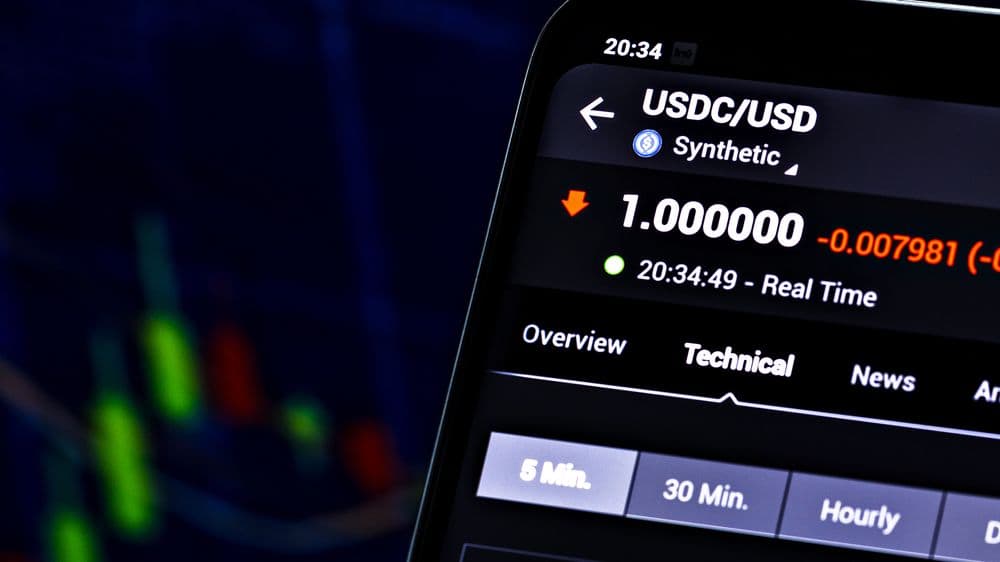Circle’s USDC stablecoin has officially launched on the XRP Ledger, ushering in a new era of cross-chain interoperability. This integration enables users to leverage XRP as a bridge currency, facilitating seamless transfers of USDC across decentralized exchanges on the XRP Ledger’s native auto-bridging functionality.
The announcement, made by Ripple on Thursday, marks a significant development for both Circle and Ripple, as it provides enhanced liquidity pathways within the DeFi space. XRP now stands as a key player in the movement of stablecoins across blockchain networks, enhancing its utility in decentralized finance applications.
Markus Infanger, Senior Vice President at RippleX, praised the integration, emphasizing its importance for bridging the gap between traditional financial systems and the emerging crypto economy. Infanger stated, “Stablecoins are key entry points connecting traditional financial markets with the crypto space - essential for use cases focused on utility rather than speculation.”
This strategic move brings new capabilities to both the XRP Ledger and Circle’s USDC, expanding the range of opportunities for users who want to harness the power of stablecoins while benefiting from the robust infrastructure of XRP.
Heightened Regulatory Scrutiny on Stablecoins
The launch of USDC on the XRP Ledger comes at a time when stablecoins are under increasing regulatory scrutiny in the U.S. The stablecoin market, now valued at over $237 billion in market capitalization, is attracting the attention of U.S. regulators as its role in global finance continues to grow. Stablecoins have become integral in many crypto transactions, primarily serving as a bridge between fiat currency and the digital asset ecosystem.
Many of these stablecoins are backed by U.S. Treasury bills, which allow issuers to earn yield through government securities. Stablecoins, such as USDC, have thus become not just a tool for payments and cross-border transactions but also an influential instrument in global economic policies.
U.S. officials, particularly in the Treasury Department, have expressed concerns about de-dollarization pressures. Countries like China and Russia have been actively reducing their exposure to U.S. Treasury bonds, which has resulted in rising bond yields and an increase in the cost of U.S. borrowing. During the March 7 White House Crypto Summit, Treasury Secretary Scott Bessent emphasized the importance of stablecoin development, underscoring the role of dollar-backed stablecoins in maintaining the U.S. dollar’s dominance in global trade.
However, some critics, including Max Keiser, argue that the future lies in gold-backed stablecoins rather than dollar-pegged assets. Keiser asserts that gold-backed tokens, with their superior stock-to-flow ratio, are better positioned to withstand inflationary pressures and provide long-term value, as they are less susceptible to the instability of fiat-backed systems.
Ripple’s Strategic Vision for XRP as a Bridge Asset
Ripple’s integration of USDC on the XRP Ledger underscores the company’s ambition to position XRP as a key liquidity bridge in the cryptocurrency ecosystem. XRP, known for its speed and cost-effectiveness in cross-border transactions, continues to build its reputation as a backbone for decentralized finance applications.
The launch of USDC on XRP Ledger aligns with Ripple’s broader vision of integrating stablecoin liquidity into its infrastructure. By enabling users to transfer USDC seamlessly across different blockchains via XRP’s bridging capabilities, Ripple is positioning XRP as a fundamental asset for liquidity in DeFi markets.
In addition to the USDC integration, Ripple’s focus on cross-chain interoperability will likely increase as more stablecoins and blockchain-based tokens are integrated into the XRPL ecosystem. This move not only enhances XRP’s role as a liquidity bridge but also bolsters the utility of XRP in decentralized finance protocols, as well as in everyday crypto transactions.
The stablecoin ecosystem has become an essential component of the crypto industry, with use cases spanning payments, remittances, and even decentralized finance applications. Ripple’s continued investment in XRP as a bridge currency will likely play a pivotal role in facilitating more widespread adoption of stablecoins across blockchain networks.
XRP Ledger’s Growing Stablecoin Ecosystem
The XRP Ledger has been expanding its stablecoin offerings, with recent additions including EURØP, a euro-pegged stablecoin from Schuman Financial, and USDB, a dollar-pegged token issued by Brazil’s Braza Group. EURØP, which is fully compliant with the European Union’s Markets in Crypto-Assets regulations, marks the first fully MiCA-compliant euro stablecoin on XRPL.
Meanwhile, USDB, backed by both U.S. and Brazilian government bonds, provides Brazilian users with a secure digital asset for both payments and hedging.
The addition of USDC to the XRP Ledger’s growing stablecoin ecosystem is seen as a significant step forward in Ripple’s strategy to build a fully integrated financial ecosystem that incorporates both traditional and digital assets. This allows users to engage in cross-border transactions with a wide variety of stablecoins, increasing the overall utility of the XRPL.
As the regulatory environment around stablecoins continues to evolve, Ripple’s ecosystem will likely become a critical hub for regulatory-compliant stablecoins, ensuring both global reach and institutional adoption.
XRP’s Role in the Global Crypto Market
Ripple’s decision to incorporate USDC into the XRP Ledger signals a new chapter in the company’s efforts to integrate blockchain technology into the traditional financial ecosystem. By facilitating the seamless movement of stablecoins across multiple blockchains, Ripple is positioning XRP as a key asset in the rapidly expanding world of decentralized finance.
As more institutions and businesses seek stable digital assets that can bridge the gap between fiat and crypto, XRP’s role as a liquidity bridge will continue to grow. Moreover, Ripple’s focus on integrating stablecoins and cross-chain functionality will help reinforce XRP’s position as a vital asset in the broader digital asset ecosystem.
While the European Central Bank has yet to formally announce any partnership with Ripple or its XRP Ledger, there has been speculation in the crypto community that the ECB may eventually adopt the XRP Ledger as part of its digital euro infrastructure. If this happens, it could provide a significant boost to Ripple’s ambitions to become a central figure in the global financial system.

